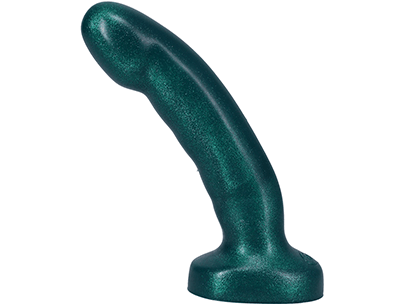A healthy sex life has a wide array of benefits for your mental and physical health. It can improve satisfaction within your relationship, boost your self-esteem, reduce stress and may even improve your spiritual well-being. But having sex regularly isn’t enough (whatever “regularly” means to you — there’s no rule or standard). The old in-and-out can offer some of these aforementioned benefits, but to really maximize your sexual wellness and satisfaction, you should probably be having an orgasm too.
For some, having an orgasm is as straightforward and simple as sneezing. For others, achieving an orgasm is just that – an achievement that takes work, practice and persistence. Read on for tips on having a happy, healthy, orgasmic sex life.
Why don’t I orgasm during sex?
Famously, it tends to be easier for men to have orgasms than women. There are several factors behind this, and they’re not all physical. Studies have shown that only 25% of women consistently have an orgasm during sex. You don’t need to be a scientist to know that men usually come much more frequently than this. So what isn’t working for women during penis-in-vagina intercourse?
Many women find they’re much more likely to achieve orgasm via clitoral stimulation rather than vaginal. So if you’re just having penetrative sex with your partner without enough foreplay or stimulation of your clit, this could be part of the issue. Everyone’s different, but sex experts recommend between 15-30 minutes of foreplay before getting into the penetrative bit of sex. That means to warm up, women should be treated to 30 minutes of massage, deep kissing, caressing, nipple stimulation, receiving oral – you get the idea – before they’re adequately prepared for penetration. It should also be noted that all of these parts of sex are sex. Penetration doesn’t have to be involved for sex to “count.”
Why can’t I have an orgasm on my own?
Orgasmic dysfunction is also known as anorgasmia and is a very real and common disorder, so please don’t feel any shame if having an orgasm doesn’t come easily to you. Some physical issues can cause orgasmic dysfunction, like various illnesses, hormonal changes and age. Some medications, especially SSRIs, can lower sex drive and reduce the ability to climax. If you suspect that any of these factors are having an impact on your sex life, talk to your doctor.
Another common suspect in difficulty orgasming is the fact that sex education historically has not included complete or accurate information on female anatomy and pleasure. It could be that socially, women have been discouraged from exploring sexually and may feel internalized shame or fear. Although the tide has certainly been turning, living or growing up in a more traditional, conservative culture can have lingering effects. Mental blocks are a huge factor in the inability to orgasm. Since you’re here reading this article, you’re probably well on your way to casting off any stigma associated with sexual freedom and adventurousness, so congrats! That’s half the battle. Also, if you’re stressed, preoccupied, depressed or just feeling unattractive, these mental barriers can also make getting there difficult. Therapy can help immensely with reducing psychological pressure.
Although men seem to orgasm more easily and more often, don’t be too jealous, gals! Typically, men’s orgasms tend to be a one-and-done deal, necessitating a rest and refraction period after ejaculation. But women don’t have this same need, allowing orgasms that are longer, more richly colored and intricate, and even recurring quickly, one after another. This is the mystical phenomenon known as multiple orgasms.
If you’re in a relationship and your partner is concerned that you’re not orgasming often enough (as a considerate partner should!), you can figure it out together. However, we encourage you to take control of your sexuality. They’re not going to know how to please you if you’re not sure how to please yourself, so get some gear and get going!
What stimulants and sex toys can I use to help me orgasm?
During sex and solo play alike, you can use your fingers to massage the clitoris to induce orgasm. But you deserve to try a vibrator. Frozen yogurt is good, but ice cream is better. The same applies here. Trust us, take it up a notch and give your poor forearm a break.
To promote orgasm during intercourse with a partner, first get warmed up. As mentioned before, foreplay should absolutely not be rushed. You need to relax both your mind and body. Before your partner even touches you, get into a sexy mindset by listening to a steamy playlist, reading an erotic novel, or even putting on a soft-core adult film. Tell your partner how to touch you.
Once you’re ready to get going, minimize any friction by lubing up. Apply a water-based lubricant both to your partner and yourself, all over, to ensure you’re properly hydrated. You can even apply a drop of a clitoral stimulant to your vulva. These serums have cooling or warming agents to create a pleasant tingle and heighten sensitivity, increasing the likelihood that you’ll orgasm.
If your partner has a penis, a great orgasm aid for sex is a vibrating cock ring. The ring is worn around the base of the penis, while a vibrating bullet on the top stimulates your clitoris every time you slide down his shaft. Turns out, the vibration feels pretty good for him, too! If you like the way it feels, get on top and grind on the toy until you reach climax.
Another great toy to use during intercourse is a finger vibrator. This versatile toy can be used anywhere – your partner can reach around and use it on your clitoris during doggy-style, spooning, reverse cowgirl, or you can take matters into your own hands and use it on yourself.
For solo play, there is an overwhelming variety of vibrators for women on the market. Arm yourself with one of each of the three main types – clitoral vibrators (for clitoral stimulation), internal vibrators (for G-spot or internal stimulation), and dual vibrators (the best of both worlds, “rabbit” vibes stimulate both). Try each style until you figure out your favorite, or switch it up with each masturbation session.
How to have Multiple Orgasms
Toys and exercise for achieving orgasms include pelvic muscle exercising and weightlifting! Kegel exercises can help you gain control over your orgasms as you strengthen your pelvic floor muscles. These are the muscles that contract and expand when you orgasm, and exercising them will help amplify the sensations of an orgasm when it occurs. Performing kegel exercises on your own is simple enough; you can practice in the bathroom by stopping and starting when you’re urinating. That sensation? Those are Kegels! Once you’ve figured them out, you can do them anywhere – sitting in traffic, washing dishes or in your next business meeting. The added bonus of strong pelvic muscles includes a “tighter” fit (because your muscles will swell as they become toned, it’ll feel “tighter” to your partner), and preventing incontinence! You can purchase Kegel toys that cause your muscles to involuntarily flex, make your exercise routine a breeze. Kegel beads, also known as ben-wa balls or vaginal weights, can be worn during everyday activity, and you’ll be the only one who knows what’s going on.
Once your muscles are nice and toned, start flexing them. Plan a night in, keep your toybox nearby, and lubricate generously. First, begin your session as you normally would, tuning into a sexy soundtrack, reading erotica, or returning to a favorite fantasy. Grab your favorite vibe and start using it. But this time, right when you feel you’re on the edge of orgasming, stop. Wait a few beats and start again. Repeat until you can’t take it anymore. This helps your body train to stay orgasmic for longer, as you’re experiencing the pre-orgasm state for longer. Plus, with all that teasing, you may find that your final orgasm is a flood of intensity. Once your first orgasm is over, resist the urge to roll over and take a nap. Breathe deeply, and then go right back in. Take a moment to have a glass of water or switch equipment, but stay in the moment. Another tip is to “trick” your body into orgasming again – once you’ve climaxed, take a break, then begin masturbating again. If you feel close but aren’t getting there yet, consciously demonstrate the bodily symptoms you exhibit when you’re orgasming – a heavy breathing pattern, clenched fists, moans of pleasure. These secondary cues might, in fact, trigger your body to orgasm again.
If it doesn’t work the first time, practice!
When you’re done, don’t forget to share the delights of multiple orgasms with your partner. If they have a penis, they may not be able to experience multiple Os the old-fashioned way, but it is possible if they’re willing to take a more adventurous route. Check out our blog about prostate stimulation to find out how to give your guy the most intense multiple P-spot orgasm, and keep his sexual health in tip-top shape.


















